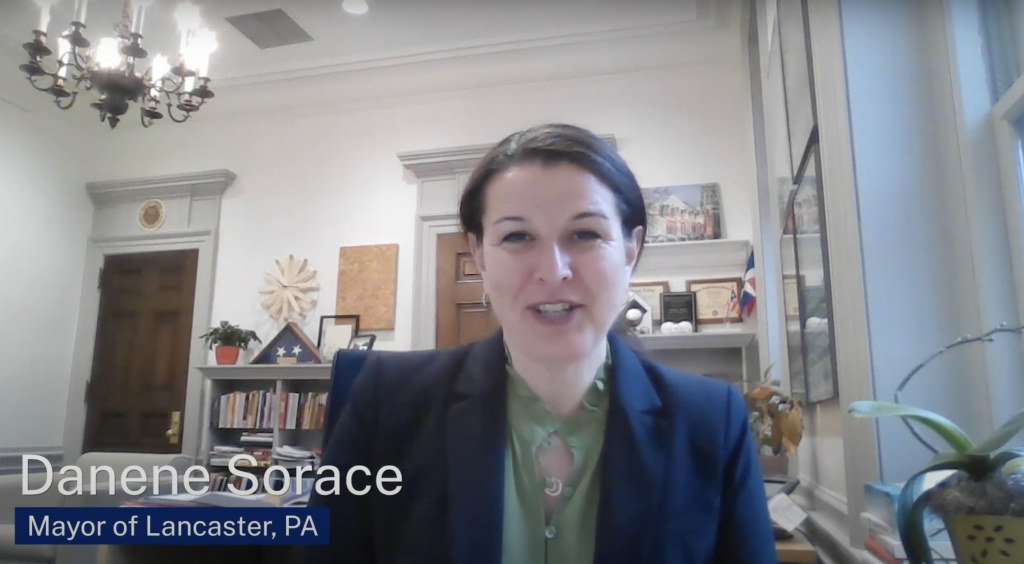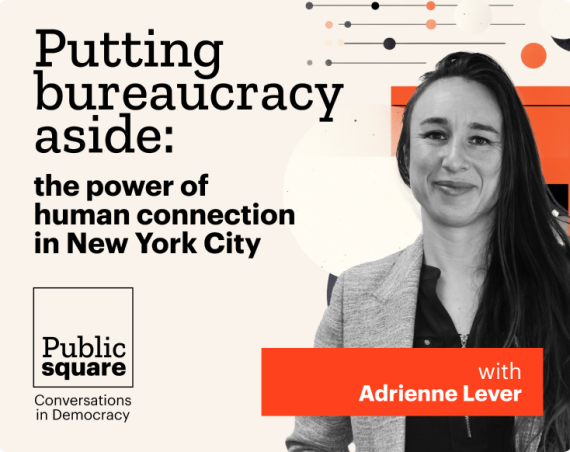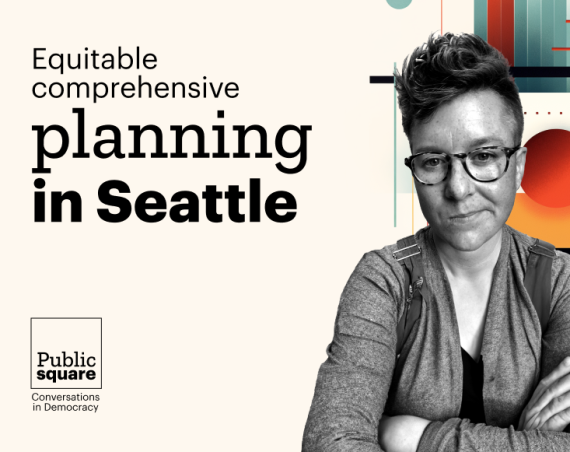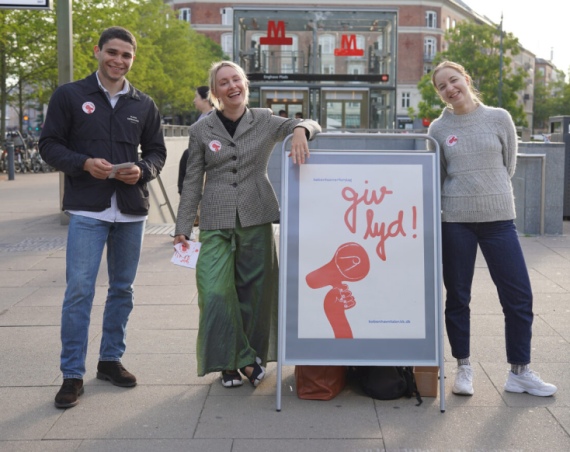Ensuring that your community engagement is successful and worthwhile requires the full buy-in and continuous support from all levels of the community, starting with your organization and eventually also your residents. It requires developing a culture of engagement in your city. This doesn’t have to be daunting, and in the long run it will save you time, money, and headaches.
In many states, community engagement is even now written into new laws and policies. For example, in Washington, as part of the promotion of environmental justice, the state requires that by July 1, 2022 all agencies have a defined community engagement plan for more equitable public participation in sustainable policies. Beyond legal requirements, community engagement is also becoming a norm in the pursuit of developing more inclusive and participatory governments. So let’s start building a culture of community engagement in your city today.
How can you build a culture of engagement in your community?
Since community engagement is no longer just a “nice to have”, but rather a must-have, here are the 5 easy steps you can follow to build a culture of engagement.
Step 1: Build internal consensus and a dedicated support team for your engagement efforts.
Building a community engagement platform/plan can take a lot of time and likely an array of meetings with a wide variety of stakeholders on your team. But these are essential if you want to develop long-term buy-in from your team. The more you are able to discuss and continue to display the value of community engagement, the more likely your efforts are to be successful.
Here are a few tips on how you can develop internal support for your community engagement:
- Link community engagement to your key organizational and team objectives and priorities. If done right, engagement will only ameliorate the work that you are already doing every day for your community, so be sure that you link it to your team’s pre-existing work. There is so much you can accomplish through community engagement, and it has the opportunity to improve not only the lives of your residents but you as well
- Identify the potential challenges and subsequent solutions of engagement. Inherently, opening the door to community engagement in pursuit of transparency will be met with risks and pushback, but it is nothing that a local government hasn’t faced before. If you are prepared for them, and can show your peers and the community that you know how to address these challenges, it will build confidence and support for your efforts.
- Provide examples of how cities similar to yours to concretely show the value that engagement can bring to a community. Real world examples allow you to bring engagement to life in a way that others can relate to, from the potential number of residents you could reach to the direct impact that engagement can have on policies/communities.
Step 2: Define key goals, expectations, and processes for engagement, including a clear engagement director and/or team to be dedicated to the efforts.
Once you’ve won your team’s approval, work together to set clear, measurable, and achievable goals. In order to do this, ask the following questions:
- What do you hope to accomplish through community engagement?
- How will you engage with your community and gather feedback?
- Who do you want to hear from? What type of feedback are you looking for?
- How will you analyze and use the data collected to influence your decision-making?
- What methods will you use to keep your residents continuously informed and engaged?
The City of Lancaster, PA has built an incredibly strong culture of engagement in their community by doing just this. Listen to Danene Sorace, the Mayor of Lancaster, give her advice on the importance of devoting time upfront:
“When we are just getting going around different projects, when you intentionally do engagement at the front end, it will save you time and money as the process moves along. So that would be the first thing: invest in it. That return on investment will come because the projects are going to go more smoothly in the later phases. And there’s gonna be a lot more goodwill and good feeling about those projects as they relate to public investment.
The second thing I would say is be clear about the type of engagement and why and how you do engagement in your community.”

Step 3: Start slowly and deliberately, one project at a time.
By starting small and thoughtfully, you can develop a clear, holistic engagement approach – whether that be an online platform or other methods – that will set your culture of engagement up for success from day one. It’s easy to get discouraged when you put the time and effort into an exciting initiative that doesn’t pay off, and it’s also easy to discourage key stakeholders from providing continuous support if it doesn’t pay off. Avoid this by being deliberate in your initial engagement:
- Pick a project that you know is a top priority for a wide range of residents in your community. By picking and opening up an issue that everyone cares about, such as affordable housing, you’ll be able to drive motivated people directly to the engagement. Once you get people across the initial hurdle of signing up for a community engagement platform, for example, it’s much easier to continuously engage them on both current and new topics.
- Meet your community where they are. Understand the current culture of engagement – or lack thereof – in your community and pinpoint the opportunities as well as limitations of what new engagement methods could have. Whether you are using digital or offline methods, you won’t be able to change your culture of engagement overnight, so it’s essential to take the current status into account, including the existing gaps. By doing so you can fill in those gaps and also reach parts of your population that might not otherwise be engaged. This ultimately will make your policies more inclusive and representative of your entire community’s needs.
- Develop a clear communications plan that fits within and improves upon your existing engagement strategy. You don’t need to reinvent the wheel, but your engagement efforts will only be successful if your community knows about them. You have an existing communications strategy, and you have your goals for engagement set. Be proactive in how you market these goals and your community engagement to ensure you are able to maximize reach to as many people in your community as possible. Whether it’s social media, paper flyers in schools, or a video announcement, take the time upfront to plan how you will communicate your engagement initiative to continue to build the culture of engagement.
Step 4: Maintain positive engagement, both internally and externally, by providing continuous updates on the projects being discussed.
Using data-driven reports and direct community feedback, it’s important to communicate to your community the direct impact their engagement had on specific policies or decisions to show that their input is valued and truly taken into account. It is also important to continuously share the success and benefits of the engagement to your team on an ongoing basis to maintain their support for the initiative. Ultimately, a culture of engagement is the result of stakeholders from all sides of the process showing continuous engagement and excitement, and that is what will bolster the success of community engagement and a more participatory government.
Step 5: Keep the projects coming, and watch your culture of engagement grow.
Once engagement has buy-in and has shown initial success across the community, maintain the momentum. A successful culture of engagement will never be the result of a single project, so it’s crucial to continuously post new projects and engagement opportunities. One of the core goals of an engagement platform, for example, is to provide residents with a consolidated, trusted place to come to for information. To keep them coming back, continue to market your engagement initiatives and create new opportunities for the residents to stay engaged, literally.
An online community engagement platform can be a key part in the creation of a culture of engagement. See how CitizenLab can help you get there today.
Read more on building engagement into your city:





